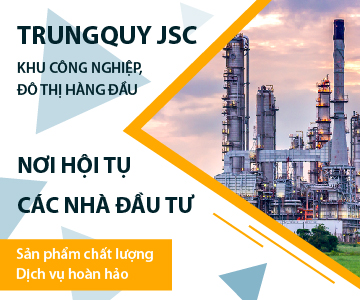INTERNATIONAL INVESTMENT
AND PORTAL
Extended producer responsibility (EPR) in Vietnam has been implemented for about a year and a half. How have the rules been making an impact here?
 Jonathan Sourintha, vice chairman of the Green Growth Sector Committee under the European Chamber of Commerce in Vietnam
Jonathan Sourintha, vice chairman of the Green Growth Sector Committee under the European Chamber of Commerce in Vietnam
The EPR regime, effective from January 2024 under Vietnam’s Law on Environmental Protection, has significantly influenced the market by mandating producers and importers to manage product lifecycles. This includes recycling and waste treatment across multiple categories, such as plastics and packaging, batteries, lubricants, tyres, and electrical/electronic products, with vehicles slated for 2027, including recycling and waste treatment.
In its inaugural year, EPR drove a notable increase in recycling activities; for instance, the collected-for-recycling rate for PET packaging reached approximately 50 per cent, the highest among key resins, due to high-value applications and end-use demand.
Domestic recycling factories reported processing rates of 60-65 per cent for plastic bottles, with potential to exceed this through technological upgrades. This has stimulated market growth in the recycling sector, with over 100 enterprises registering for EPR compliance by mid-2024, fostering investments in infrastructure and creating jobs in waste collection and processing.
From our observations, EPR has promoted circular economy development by aligning with Vietnam’s ambitions, aiming for 85 per cent solid waste collection and treatment and gradually reducing production and use of non-biodegradable nylon bags and disposable plastic products by the end of 2025.
Market impacts include incentives for eco-design, such as modulated fees that reward recyclable packaging, leading to a surge in demand for recycled materials and reducing environmental pollution. In the food and beverage industry, EPR has modernised production, cut plastic waste by encouraging reusable models, and boosted export competitiveness to markets like the EU and US, where sustainability standards are stringent.
Overall, EPR has transformed waste into economic value, with early data showing a 10-15 per cent increase, according to the Vietnam Business Forum, in formal recycling participation, supporting Vietnam’s goal of a circular economy by 2035 in accordance with the national action plan for circular economy implementation by 2035.
In comparison to Europe, where EPR policies have been established for decades under directives like the one on packaging and related waste, Vietnam’s nascent system lags in maturity but shows promising alignment.
How have members of the European Chamber of Commerce in Vietnam (EuroCham) performed since the effective date of the EPR rules, and what impacts they made on their business activities?
Our member companies, representing over 1,400 European businesses in Vietnam, have exhibited robust performance in EPR adaptation, leveraging prior experience with EU regulations like the Carbon Border Adjustment Mechanism and EPR frameworks.
In Q2, the Business Confidence Index reached 61.1, a sharp rise from 51.3 in Q2 2024, indicating optimistic sentiment amid sustainability initiatives. With clearer rules and stronger reform commitments, Vietnam is on the cusp of becoming a magnet for high-quality investment and sustainable development.
The EuroCham Whitebook 2025 emphasises EPR as a catalyst for innovation, through events like the Green Economy Forum & Exhibition last year, where lessons on EPR were shared. Impacts on business activities are dual-edged: positively, it has driven investments in recycling and enhanced export readiness, with compliance enabling access to EU markets valuing circular practices.
However, adaptation costs affect 20-25 per cent of operations for some firms, including workforce training and supply chain shifts, though excess recycled volumes from 2024 can carry over to 2025, easing burdens.
Overall, performance is strong, with EPR positioning members as leaders in Vietnam’s green economy, as noted in our Whitebook. Compared to Europe, EuroCham members in Vietnam benefit from cross-pollination; EU EPR compliance rates exceed 90 per cent in mature markets like France and Germany, with impacts including 10-15 per cent cost savings from efficient recycling systems.
In Vietnam, while performance mirrors EU optimism, impacts involve higher initial investments (5-10 per cent of revenue for compliance) versus Europe’s streamlined processes, yet both regions see EPR enhancing competitiveness by 15-20 per cent in global trade.
What are the challenges to be cleared to improve the effectiveness of enforcement, thus meeting market and business expectations?
Challenges in EPR enforcement include inconsistent regulations causing compliance confusion, with only 60-70 per cent of targeted enterprises registering by early 2025 due to ambiguous guidelines.
Infrastructure gaps persist, with recycling facilities handling just 20-30 per cent of waste volume efficiently, leading to high costs, around $40-80 per ton for processing, and low domestic demand for recyclates. Public participation is limited at 40-50 per cent awareness levels, and enforcement is uneven, with small businesses facing barriers like high deposit fees for imports, and up to 20 per cent of product value.
Over 18 months in, these issues have resulted in delayed targets, with only 50-60 per cent achievement in packaging sectors. To enhance effectiveness, businesses expect unified regulations via amendments like Decree No.05/2025/ND-CP, which refined processes and expanded scope, alongside a standalone EPR decree for simplification.
Anticipations include government subsidies, such as 20-30 per cent cost reductions, infrastructure upgrades to boost capacity by 50 per cent, and awareness campaigns to raise participation to 70-80 per cent. Stakeholder engagement, such as through national portals, is key for monitoring, with expectations for EPR to drive 10-15 per cent annual growth in the circular economy by 2030.
In Europe, EPR challenges were similar initially but resolved through harmonised EU directives, achieving 80-90 per cent enforcement rates versus Vietnam’s 60-70 per cent. Businesses there expect continued fee modulation for 10-20 per cent efficiency gains, while Vietnam seeks comparable infrastructure to close the 20-30 per cent recycling rate gap.
From our perspective, Vietnam’s EPR system stands at a pivotal juncture. The legislative framework is in place, but its success will depend on bridging regulatory gaps, investing in modern recycling infrastructure, and ensuring transparent, predictable enforcement. With the right reforms over the next 2-3 years, Vietnam can close its performance gap and emerge as a regional leader in the circular economy.



















